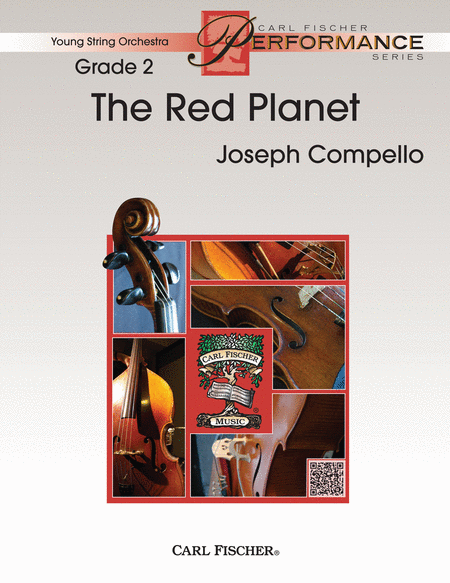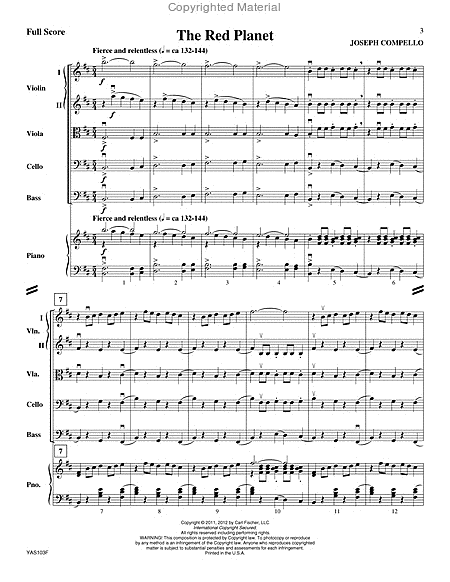The Red Planet
-
Ships in 1 to 2 weeks
Details
Description
SKU: CF.YAS103
Composed by Joseph Compello. SWS FS. Young String Orchestra. Set of Score and Parts. With Standard notation. 16+16+4+10+10+10+4+8 pages. Carl Fischer Music #YAS103. Published by Carl Fischer Music (CF.YAS103).ISBN 9780825889080. UPC: 798408089085. 8.5 x 11 inches. Key: B minor.
Joseph Compello depicts the planet Mars with The Red Planet, a heavy, brooding piece in 5/4. This piece provides cross-curricular opportunities to work with the school’s science department. Best of all, it will allow your group to show off the maturity of their playing.
The Red Planet is an original concert piece in time for a string ensemble with at least one year’s training. The opening section should be played in a boldly aggressive style. To give the parts a less complex appearance, staccato quarter-notes are used in lieu of eighth-notes followed by eight-rests. This notation will enable young players to count with greater ease.Notes on the performance:Measure 7 introduces the main theme in the first violins.Measure 15 introduces a secondary theme which becomes increasingly important as thepiece progresses.Measure 24 introduces a third theme and its counter-melody. This section should be played in a lyrically flowing style, in contrast to the main theme from m. 9.Measure 35, marked fugato, will require particular attention to entrances. The playing style reverts to the boldness of the opening mood.Measure 55 is the recapitulation with an addition of a new chromatic line. This line, given to first violins, should be soaring and equal in volume to the main theme. Note that the secondary theme (originally played in m. 15) is played only after the repeat.Measure 66 should be played much more slowly and in a grandiose manner. Here, the main theme should be given much more weight than it received in the opening statement.Note that at m. 68 the secondary theme concludes the piece ponderously in thelow strings. The conductor may dictate each note at this point and disregard the meter.This arrangement has been recorded by Carl Fischer. The performance is available on line free of charge.Thank you for choosing this composition. I hope your students and audience will find it instructiveand enjoyable.Joseph CompelloGlen Arm, Maryland.
About Carl Fischer Young String Orchestra Series
This series of Grade 2/Grade 2.5 pieces is designed for second and third year ensembles. The pieces in this series are characterized by:
--Occasionally extending to third position
--Keys carefully considered for appropriate difficulty
--Addition of separate 2nd violin and viola parts
--Viola T.C. part included
--Increase in independence of parts over beginning levels


 Share
Share